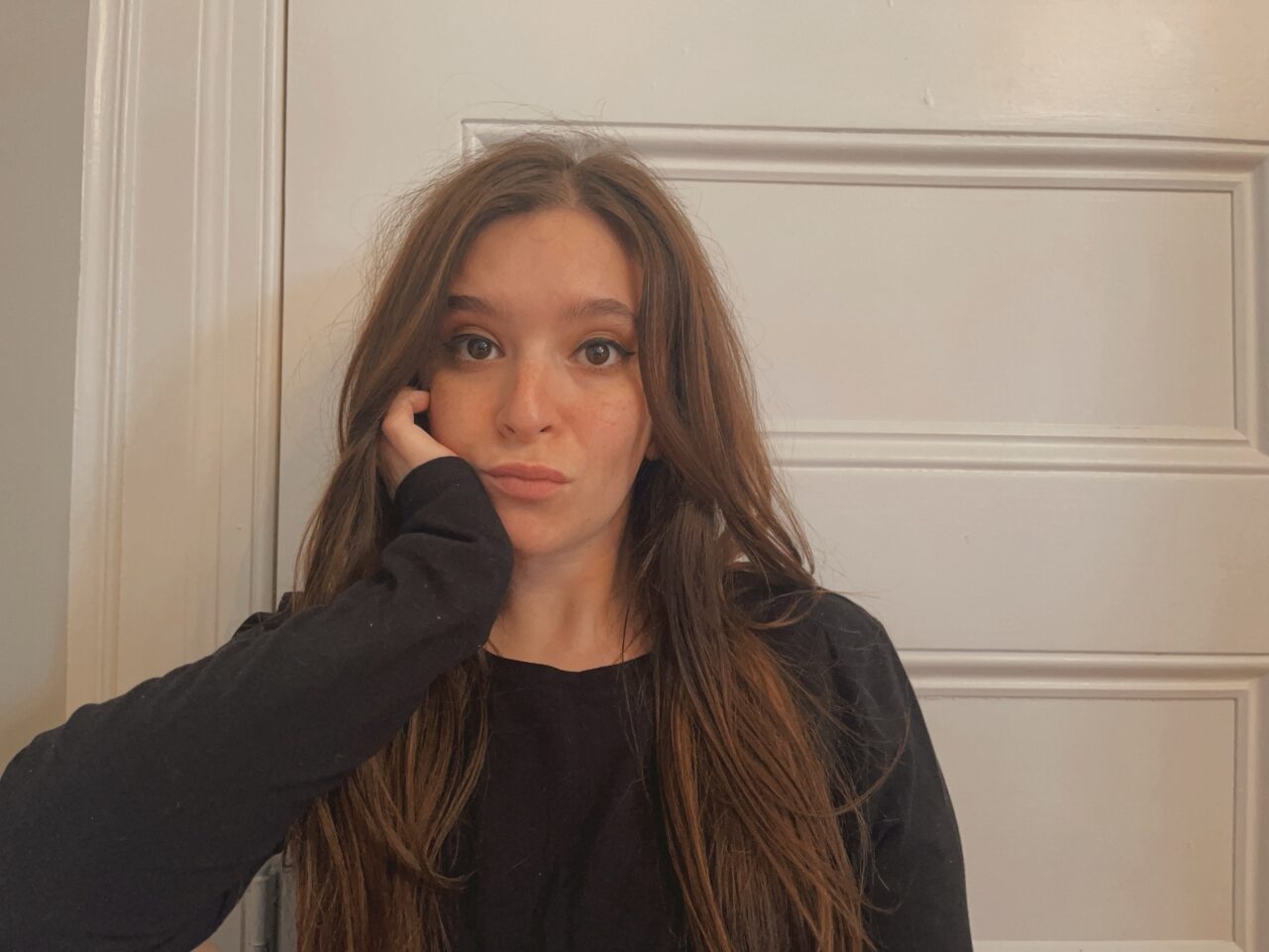
When Amplifier executive director Cleo Barnett set out to reach Gen Z voters during the 2024 election, she knew she wanted to create a movement built around inspiration.
Amplifier had already been working with K-12 schools to surround students with powerful art. Through their “Education Amplifier” network, they amplified the voices of youth leaders across the US.
“We believe that what students see on their classroom walls matters, and we wanted to showcase youth leaders that students could see themselves reflected in, while also providing clear pathways to action through the organizations they work with,” Barnett said.
This was the starting point for a partnership with Good Trouble Collaborative co-founders Laurie Spivak and Ashley Jacobs.
The team decided to expand the youth leadership art series in a way that could motivate young voters leading up to the 2024 election. Together, they worked with artists to create open-source pieces of powerful art that could be displayed on social media, on campuses, and throughout cities across the country.
Centering the campaign around themes of social justice and civic engagement, Barnett, Spivak, and Jacobs invited young leaders to put their beliefs on display in an effort to motivate their peers. One of those leaders was Nneka Ogwumike, a WNBA player and the President of the WNBA Union.
“Nneka Ogwumike has long been a champion for social justice, particularly around racial and gender equality. She’s incredibly passionate about using her platform to uplift young people,” Barnett said. “She saw this as an opportunity to inspire the next generation of changemakers by using her voice and influence.”
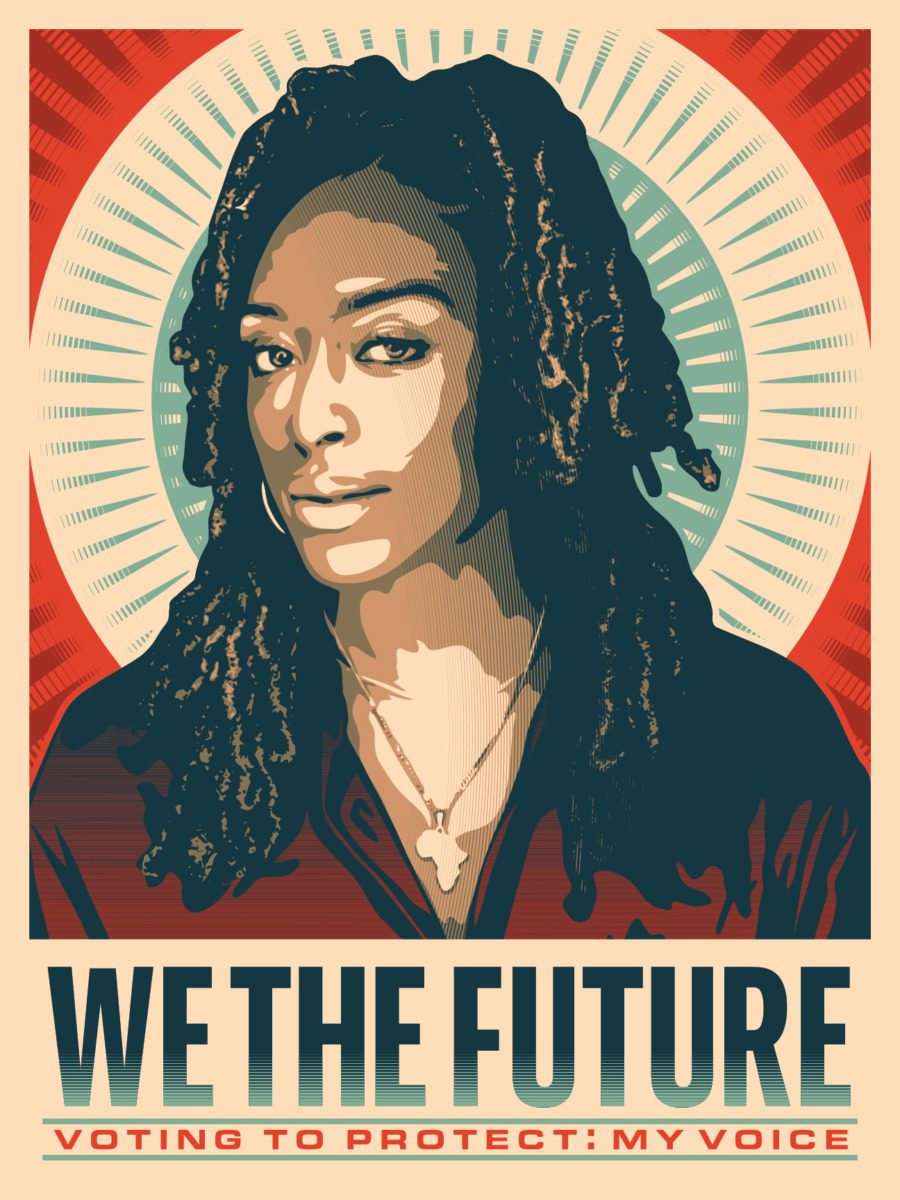
The resulting piece, created by artist Thomas Wimberly, is a rendering of Ogwumike surrounded by a sunburst of red, white, and blue. Barnett said seeing the art come together was “thrilling.”
“The art itself felt like a mirror reflecting the energy, resilience, and hope of the movement,” she said. “When we saw the final pieces, it was electric—each one felt like a rallying cry for change.”
As the three women began working with more and more artists and leaders, they began to feel a shared driving force emerging from the collaboration. They wanted Gen Z voters to understand, now more than ever, that they have a voice, that this voice matters—and that it is easier to hear when their voices are amplified through a shared cause.
“As Gen Z fears their rights are being taken away and knows various policy decisions will shape their futures, focusing our ‘We the Future’ campaign on the critical issues they care about most will help drive more young people to the polls this cycle,” Jacobs said.
She added that having the art focus on issues important to Gen Z was critical this election year.
“Key issues such as climate change, economy, gun reform, and reproductive rights are most likely to turn out the largest number of Gen Z voters, the most diverse generation in US history, who have the power to determine the outcome of this election,” Spivak said.
And, given that 41 million members of Gen Z are eligible to vote this year, the group said they wanted to make sure this core demographic felt heard and supported by organizations that value their lived experiences.
“This approach is about more than just accessibility—it’s about igniting a movement and amplifying the voices that demand change, ensuring that the messages of justice resonate far and wide,” Barnett said.

Two artists share why they wanted to get involved
Artists Thomas Wimberly and Adriana Arriaga were inspired to join the “We The Future” movement because they believed in the goal that Barnett, Spivak, and Jacobs were trying to reach. When asked why he chose to work on the campaign, Wimberly said: “To be a part of a movement to encourage people to vote is an honor, and I hope that some of the imagery I made helped to push that movement forward.”
Arriaga echoed this sentiment and expanded on why she felt her work here was so significant. “When artists are hired to create a piece of work that speaks to people, that’s a serious responsibility. It allows artists to bring awareness to important issues and to engage with the community in a way that is personal.”
View this post on Instagram
She added, “If you’re seeing art when you’re riding the bus, or you’re putting posters on your classroom wall, or you share art online—wherever you’re seeing art—that art has now influenced you in some way to make certain decisions.”
It was this mindset that has allowed the “We The Future” campaign to gain traction in the weeks leading up to the election.
“Having the ability to visually communicate with people in a way that is universally understood is a powerful tool that should be used to support what happens in our communities,” Arriaga said. “As artists we need to ask ourselves, ‘How do we influence people to do what’s right?’”
View this post on Instagram
Doing what’s right—that’s the backbone of this collaboration, and it’s how Arriaga and Wimberly regard the 2024 election in general. How do we create a world that’s safe for everyone, regardless of their gender, sexuality, or race? For the myriad people behind the “We The Future” campaign, the creation of that world starts in the voting booth.
“I hope that this work helps to embolden people to vote and take it even further by getting involved in local levels of government so that they can affect the change they wish to see for themselves and their neighbors,” Wimberly said.
Why ‘open source’ art is important
While many of the “We the Future” pieces are displayed in cities around the country, all of them are available for the public to download and use free of charge. Amplifier and Good Trouble Collaborative agreed that they should be held under an “open source” license, which grants anyone the right to use the work without modifying it.
“All of the artwork we commission is made open-source to democratize art and ensure it is accessible to everyone, everywhere,” Barnett said. “By making the art open-source, we empower communities to harness these images to drive the much-needed cultural change, integrating them into classrooms, homes, and public spaces so they become woven into our everyday lives.”
School campuses provided the perfect backdrop for the campaign
Going straight to the source—school campuses—to inspire, test, and build a connection to civic engagement was something of fundamental importance to this campaign.
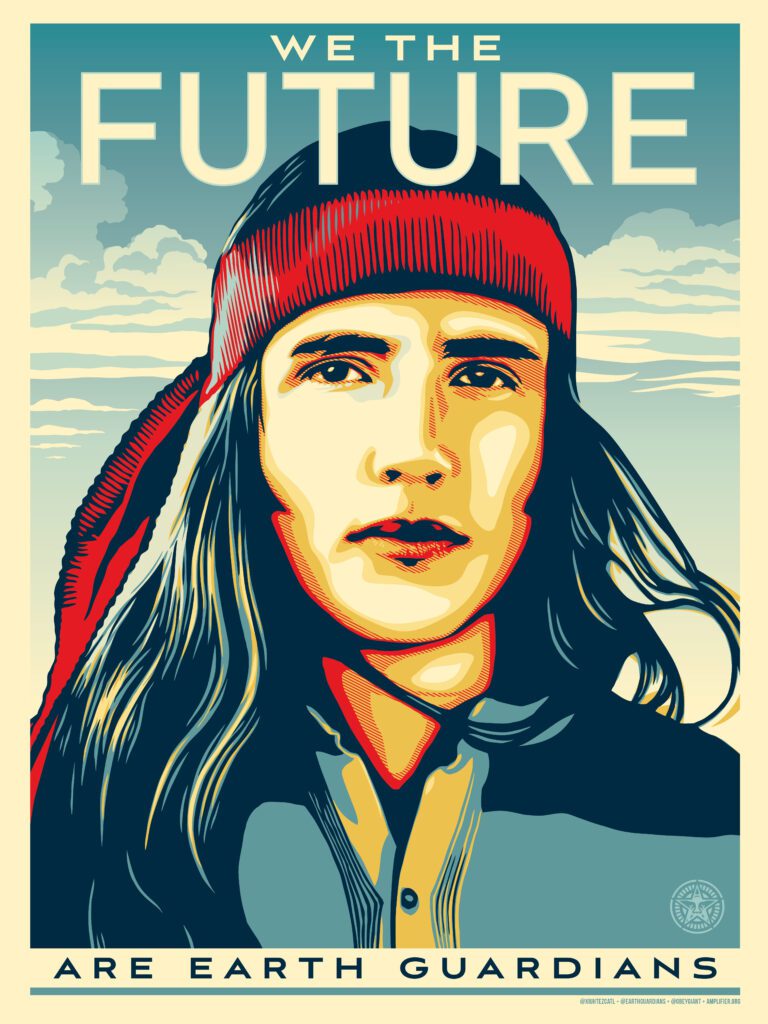
“Our outdoor wild posting campaign around campuses and in high foot-traffic areas with dense youth populations will garner over 120MM media impressions through Election Day. We’re also testing the effectiveness of these IRL activations among young voters with QR codes on our outdoor media to drive young people to register and vote. In these final weeks before the election, we’re ramping up our digital GOTV campaign with these artworks as well and will have more data to share in the coming weeks,” Jacobs said.
Good Trouble viewed this partnership with Amplifier as a way to build off the momentum of a previously successful initiative. Recently, they ran a Community College VOTE EARLY Concert Competition that reached more than one million community college students with voter registration events held on hundreds of campuses nationwide. Funded by Levi’s and MTV, on-the-ground partners with Good Trouble Collaborative were Students Learn Students Vote (the largest coalition of on-campus voter registration organizations) and CivicNation’s ALL IN. When asked why they focused on community colleges for this competition, they said that voting rates of community college students have historically been nearly 10 percentage points lower than public four-year universities due to under-resourcing.
Plus, 10 million students attend these institutions, and community colleges represent some of the most diverse student bodies nationwide. Since diversity and inclusion are the name of the game for Good Trouble and Amplifier, it made sense that these two organizations would come together in service of the next generation of voters.
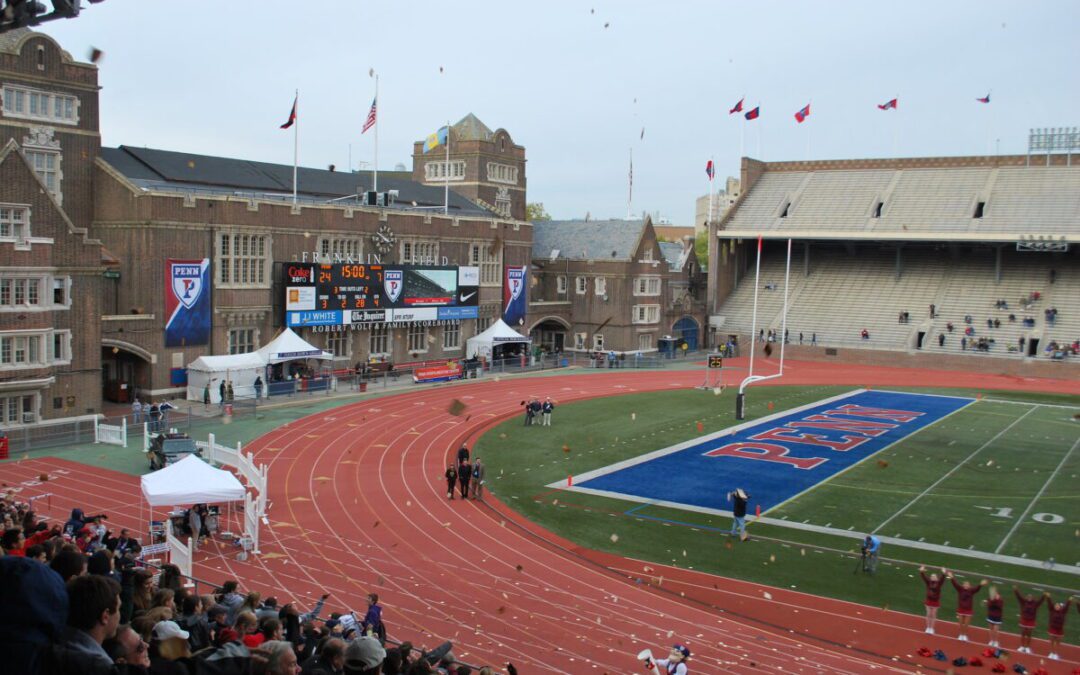
9 wacky traditions Pennsylvania colleges keep alive
From throwing slices of bread to screaming away the stress, here are nine weird traditions that help Pennsylvania colleges build community. The...
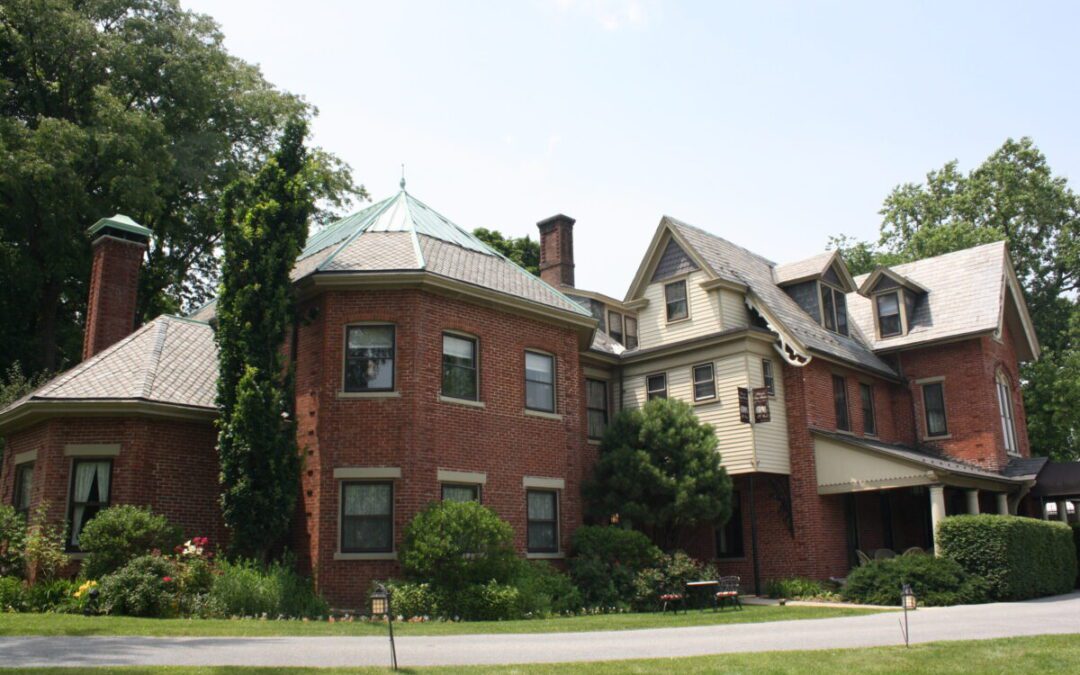
7 quaint & historical B&Bs to book in Pennsylvania
Each of these seven quaint and historical Pennsylvania B&Bs has a unique story to tell. Here’s what you need to know. Finding the right place to...
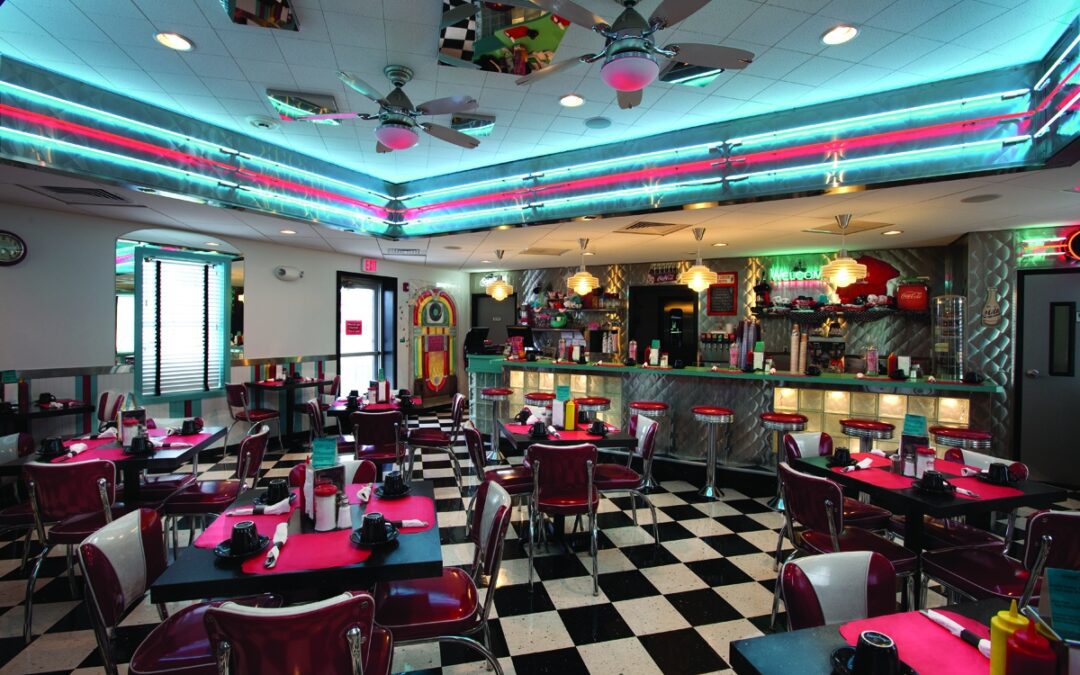
These 9 restaurants in Pa. really committed to their themes
From nostalgic menus to immersive atmospheres, these Pennsylvania restaurants fully embrace their themes. We love a theme. And there’s something...

From Batman to Clemente: Meet Pittsburgh’s inaugural Walk of Fame class
Industrialist Andrew Carnegie, actor Michael Keaton, conservationist Rachel Carson, and Pirates icon Roberto Clemente are among those who will be...

Musikfest 2025 is here: What to know before you go
More than 1 million people attended Musikfest in Bethlehem last year. Now in its 42nd year, the festival runs Thursday through Aug. 10, with more...

